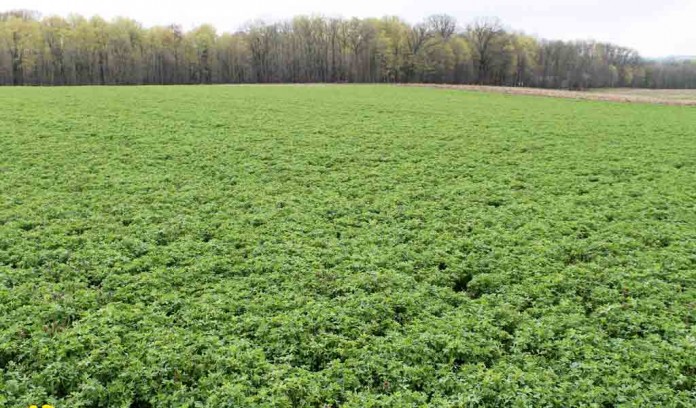As graziers, livestock producers and stewards of the land, we have many considerations. Our baseline knowledge of plant anatomy and physiology is important, as is understanding the forage life cycle and managing pasture growth for animal needs. When it comes to plant anatomy and physiology, we need to consider the differences in grasses, legumes or forbs within pastures and how they interact with our livestock.
We can see noticeable differences when we switch from continuous grazing to a rotational grazing system or a different form of management-intensive grazing. If we were to take a snapshot of a continuously grazed pasture for one week and place it side by side with a rotationally grazed pasture, we would see that the periods of growth after grazing or clipping would be substantially different. Overgrazing can stress the root system and inhibit regrowth, while undergrazing can accelerate plants into their respective reproductive phase.
To manage our pasture plants in the reproductive stage, we need to understand whether they occur by seed or rhizomes/stolons based on the variety. We also need to find a balance between maximizing quality and yield. This means allowing for adequate space and rests for the pastures, grazing at appropriate intervals and avoiding certain problem areas such as feeding in areas of high waste accumulation.
Another important management tool is utilizing body condition scoring, BCS, to match nutrient intake for the forage calendar. For example, beef cattle have four distinct nutritional requirement periods in a year, and we need to plan accordingly to meet their needs. This helps us to understand how to manipulate our strategy to serve our livestock’s needs better.
Ultimately, if we want to achieve success, we need to take appropriate measures for plants that are tolerated and desirable, and act against those that are considered undesirable. A key role in pasture health is monitoring legume percentage when checking the stand for those desirable plants. Legumes can provide additional nitrogen and protein within the forage offering. A good goal is around 20% of dry weight, while a percentage of 40 or more could cause digestive issues such as bloat to become a concern.
As we work through each challenge, it is important to remember that numerous resources are available to us. Plan to take a moment to check in with your county agriculture and natural resources extension educator. They will provide you with the latest research-based information for timely adaptation of current best management practices for the continued success of your operation.













